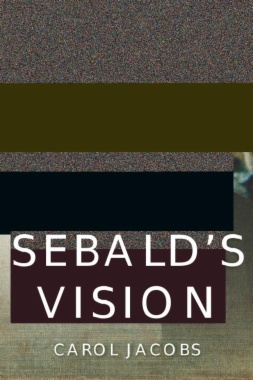W. G. Sebald's writing has been widely recognized for its intense, nuanced engagement with the Holocaust, the Allied bombing of Germany in WWII, and other episodes of violence throughout history. Through his inventive use of narrative form and juxtaposition of image and text, Sebald's work has offered readers new ways to think about remembering and representing trauma.
In Sebald's Vision, Carol Jacobs examines the author's prose, novels, and poems, illuminating the ethical and aesthetic questions that shaped his remarkable oeuvre. Through the trope of "vision," Jacobs explores aspects of Sebald's writing and the way the author's indirect depiction of events highlights the ethical imperative of representing history while at the same time calling into question the possibility of such representation.
Jacobs's lucid readings of Sebald's work also consider his famous juxtaposition of images and use of citations to explain his interest in the vagaries of perception. Isolating different ideas of vision in some of his most noted works, including Rings of Saturn, Austerlitz, and After Nature, as well as in Sebald's interviews, poetry, art criticism, and his lecture Air War and Literature, Jacobs introduces new perspectives for understanding the distinctiveness of Sebald's work and its profound moral implications.
- Table of Contents
- Preface: “Sebald’s Vision”
- Acknowledgments
- 1. “Like the snow on the Alps”: After Nature
- 2. What Does It Mean to Count?: The Emigrants
- 3. Frames and Excursions: Rings of Saturn
- 4. Toward an Epistemology of Citation: “Air War and Literature”
- 5. A is for Austerlitz: Austerlitz
- 6. Déjà vu or . . . : “Like Day and Night—On the Pictures of Jan Peter Tripp”
- 7. A Critical Eye: The Interviews
- Notes
- Works Cited
- Index

